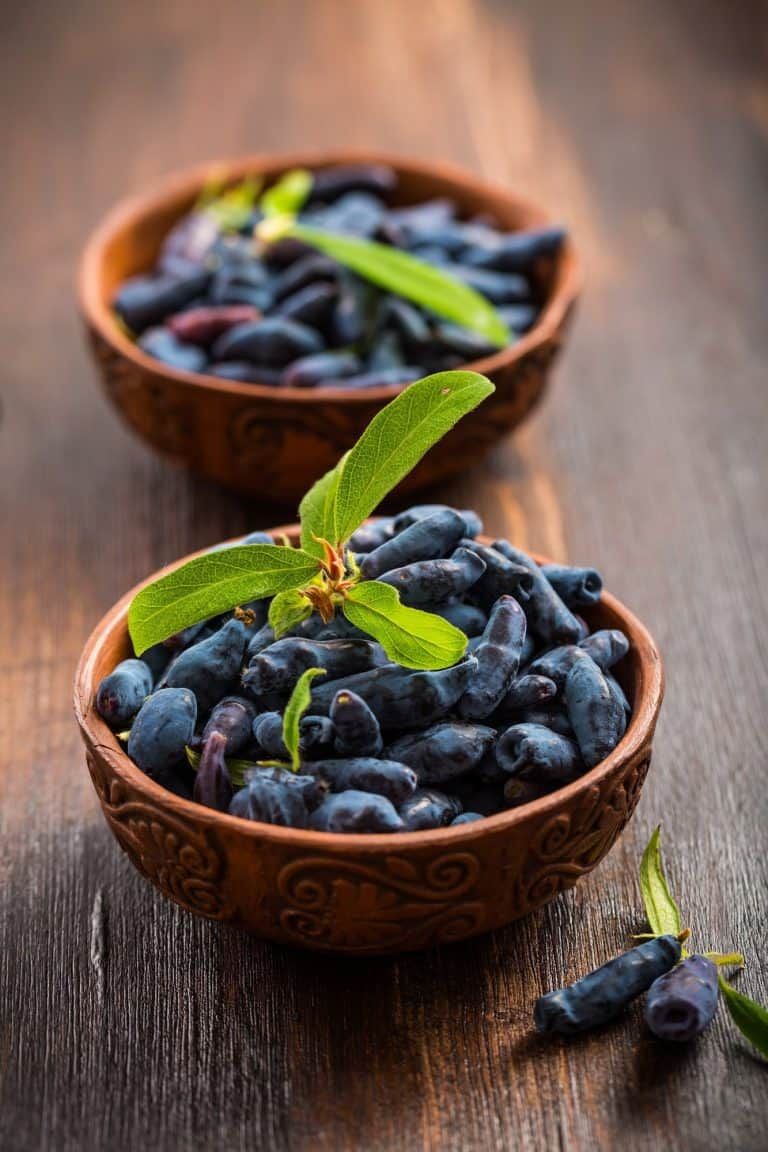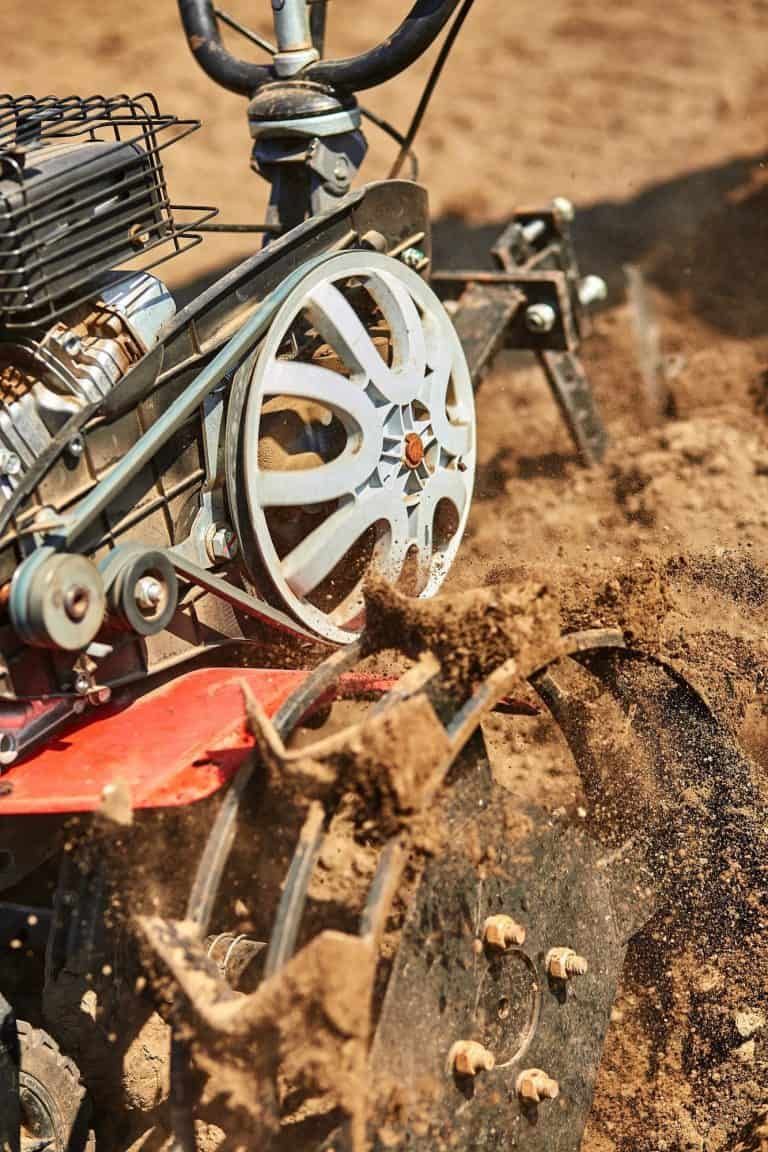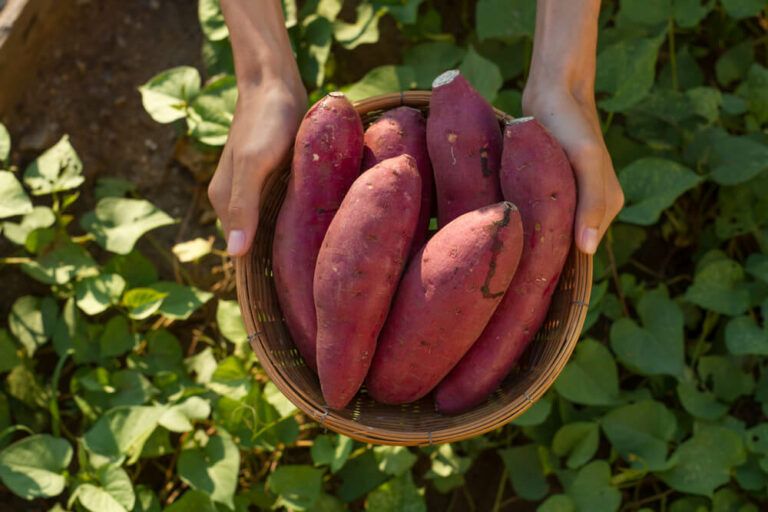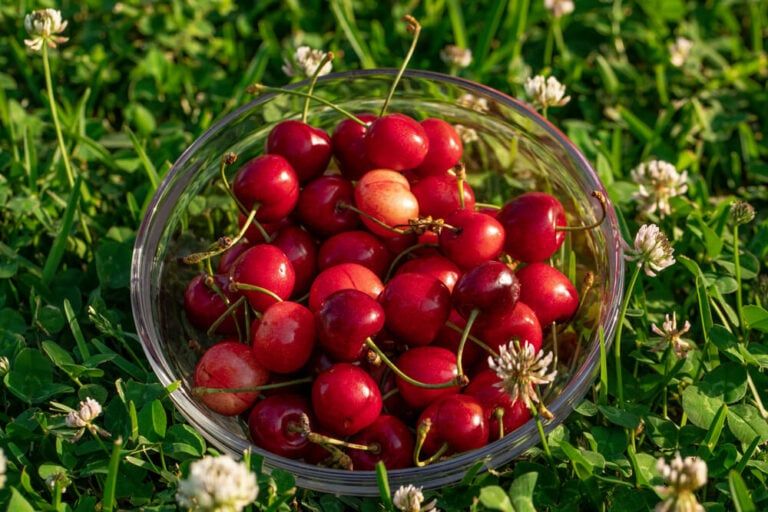How to Harvest Chives Without Killing the Plant
Welcome! This article contains affiliate links, meaning I get a commission if you decide to make a purchase through my links, at no extra cost to you.
Even if you don’t have green fingers, most people find that a herb garden is one of the easiest things to grow. There is nothing quite like cooking with fresh herbs straight from the garden!
And if you are short of space, herbs will grow happily in the tiniest of yards, or even on your kitchen windowsill.
The great thing about herbs such as chives is that many of these popular plants keep on growing for years, with minimal maintenance. They can be grown easily from seed, or you may be given excess plants when your neighbors and friends have too many.

So, what’s the fascination with chives?
Quite simply, it is all about the taste!
Fresh chives bring a delicate and fresh onion flavor to your cooking, adding a whole new element to the most basic of dishes.
Let’s take a look at how to grow chives and how to harvest chives without killing the plant!
What’s Inside:
How to Harvest Chives Without Killing the Plant
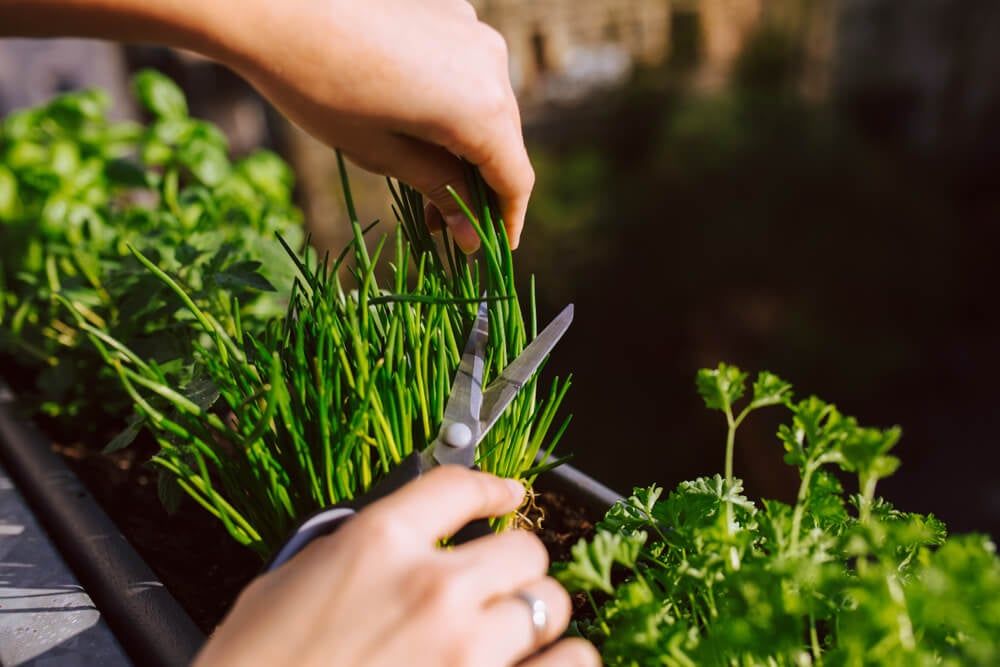
Once your chive plant has reached a height of 6″, you can start to gently harvest them. This won’t kill your plant. Using sharp, clean scissors, cut the required amount, making sure not to disturb the plant’s bulb. Cut approximately 2-4″ above the base of the plant and it will happily grow back, time and time again.
What Are Chives?
Chives are a type of herb that grows in thick clumps, to about 12 to 18 inches high.
In appearance, they are very similar to grass (as my husband found out, to his peril, when he accidentally mowed my patch of baby chives!).
On closer inspection, a bunch of chives is easy to identify. All you need to do is snap a bit off and smell it – the aroma will be very much like an onion, only fresher and more subtle.
Chives taste amazing in egg dishes, as well as soups and salads. They can be used in hot dishes but are at their best when added during the last minute or two of cooking.
Chives are also very tasty in dips – freshly chopped chives in sour cream is my favorite with a bag of crunchy tortilla chips!
Are Chives and Garlic Chives the Same Thing?
Garlic chives belong to the same botanical family as chives, but they are a different plant. They have a similar oniony flavor, but as the name implies, they also taste like garlic.
Garlic chives are much stronger than ordinary chives, and they work well in Chinese and other Asian dishes.
These garlicky herbs are grown and cared for in just the same way as regular chives. They can be difficult to grow from seed, as they need plenty of heat to germinate.
How Do Chives Multiply?
Although we assume that most plants multiply by germinating from seed, alliums such as chives have another clever way of reproducing.
Each individual bunch of chive leaves has a bulb under the soil. If you pulled up a big clump of chives, you would see hundreds of these dinky little bulbs!
Over time, each chive bulb will split and form new bulbs. This means your clump of chives will just keep on expanding, without any help from you!
How Do You Know When Chives Are Ready to Harvest?

If you’ve grown chives from seed, it will take about a year before you can harvest them regularly. You might be able to take a few small leaves every month or so, but they need time to fully establish in the first year.
Once your chives establish, you can begin harvesting them whenever they show adequate growth!
(But try not to harvest all of your chives at once. Leave enough for it to continue growing.)
How Tall Should Chives Be Before Harvesting?
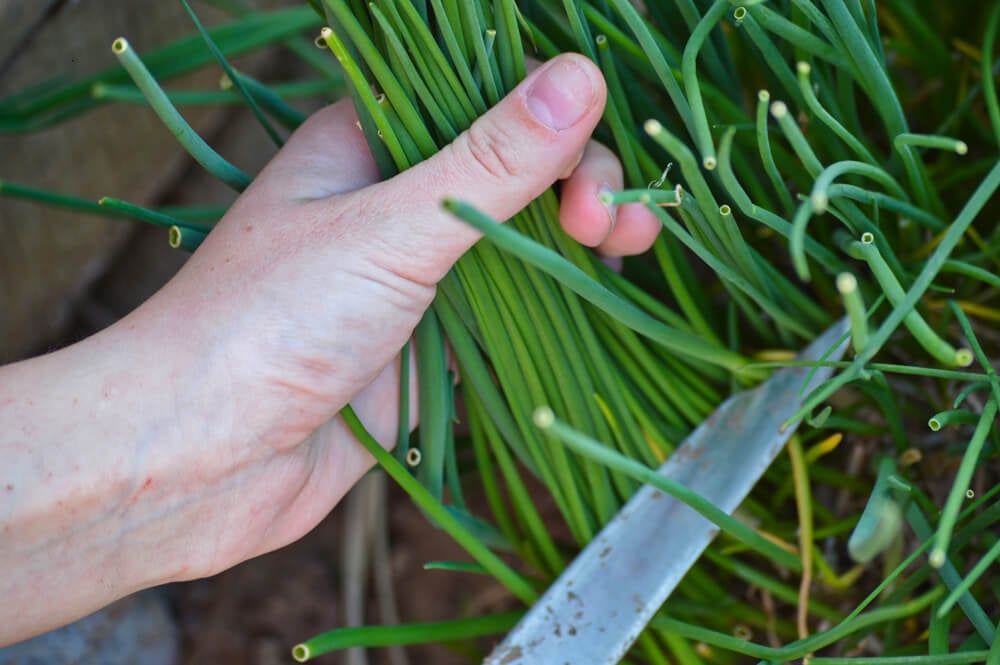
Wait until your chive leaves are at least 6 inches tall before harvesting. This will ensure that the plant continues to produce new leaves once you’ve taken your share.
How Do You Harvest Chives So It Keeps Growing?
Chives grow from bulbs that continuously sprout new leaves. Once your clump of chives has reached about 6 inches tall, you can start harvesting some of the bigger leaves.
Read More!
- When to Pick Zucchini for the Perfect Harvest? Here’s How! Tasty + Tender!
- How to Harvest and Dry Elderberries [3 Best Ways!]
- How to Grow, Harvest, and Prune Mint: The Complete Guide
- How to Harvest Cilantro Without Killing the Plant? Try These Cilantro Pro Tips!
- How to Grow and When to Harvest Lima Bean Plants From Seed
How Do You Cut Fresh Chives From Plants?
To cut fresh chives, simply snip off the biggest leaves with sharp scissors about 2 or 3 inches above the ground. This will avoid disturbing the delicate bulb and any new leaves which are starting to develop.
For younger plants, you will need to snip carefully to avoid damaging new growth. Older and more established plants will have much thicker leaves and a large bunch can be cut without harming your plant.
Do Chives Grow Back After Cutting?
Chives will grow back quickly after cutting, provided the delicate bulb and new growth have not been disturbed. Chives are a perennial plant, so will continue to grow year after year. A well-tended patch of chives really will last forever!
Should I Let My Chives Flower and Should I Deadhead Chives?
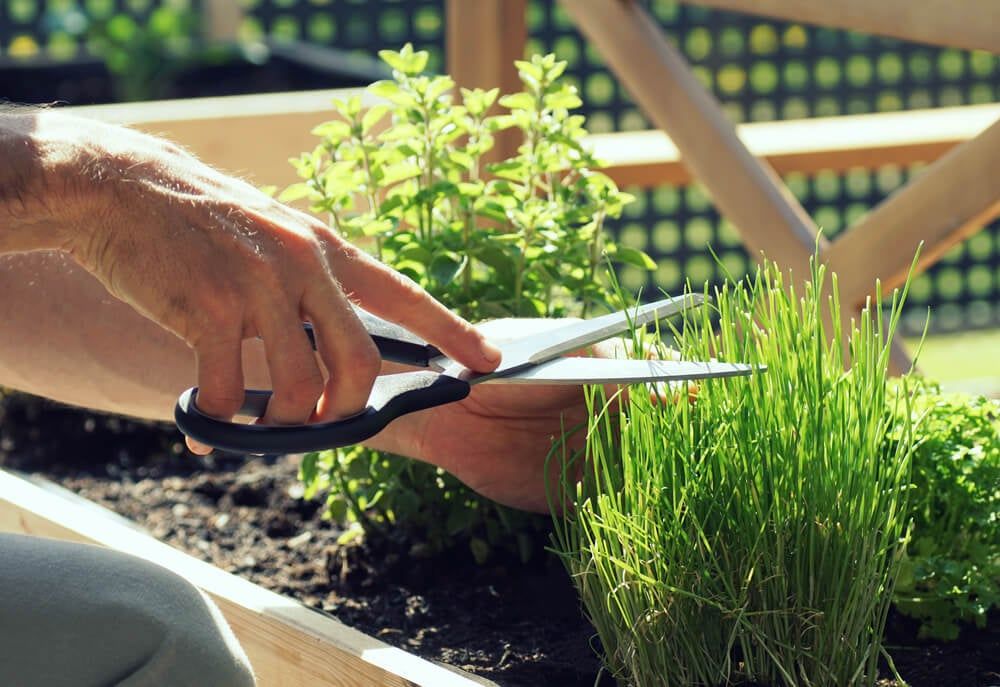
Many people don’t realize that chive flowers are also edible! These beautiful lilac blossoms make a colorful addition to salads and dips.
When it comes to flowering time, there is no harm in letting your chives come into bloom. However, the stems which hold the flowers can be quite woody, so avoid harvesting these for eating.
If you decide not to eat the flowers, the bees and other beneficial insects will enjoy them! And when the flowers have died, simply snip them off and pop them into your compost bin.
Should Overgrown Chives Be Pruned?
Over the years, chive plants can become overgrown and start to spread across the garden. Pruning chive plants will not reduce the overall size, as the leaves will just grow back.
However, pruning can help to stimulate new growth if your plant is densely packed with old, tough leaves.
The best way to deal with overgrown chives is to divide the plants – this means digging up clumps of bulbs and relocating them elsewhere.
You will find these easy to give away to other gardeners, and may even be able to swap them for other herbs! If not, they will rot down into beautiful compost on your garden waste pile.
Did you know that you can grow herbs all-year round with the Aerogarden? This is a nifty countertop garden that is so easy to use, you’ll be amazed!
The 6-pod Harvest garden is our most popular countertop garden. It’s easy to use, has a sleek tailored shape and a small footprint to fit in any kitchen. It's never been easier to grow fresh herbs and vegetables year-round!
Plants grow in water - no soil, no mess. Sprouts in days, harvest in weeks, enjoy for months!
Conclusion
Chive is one of our favorite garden herbs for savory dishes, sauces, and soups.
And it’s also surprisingly easy to harvest if you follow the tips in our chive-harvesting guide!
If you have further questions about how to harvest chive to keep it growing, feel free to ask!
Or, feel free to share if you have chive-harvesting tips that we haven’t thought of yet.
Thanks so much for reading.
And have a great day!
How do you like to use chives? Do you eat the flowers? Tell us all about it in the comments!

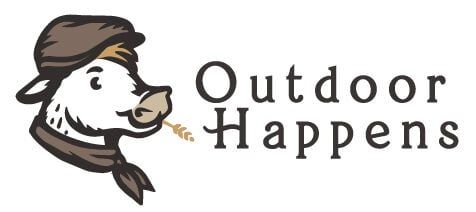
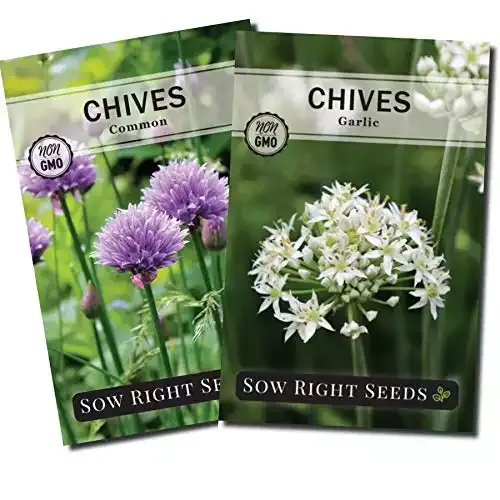
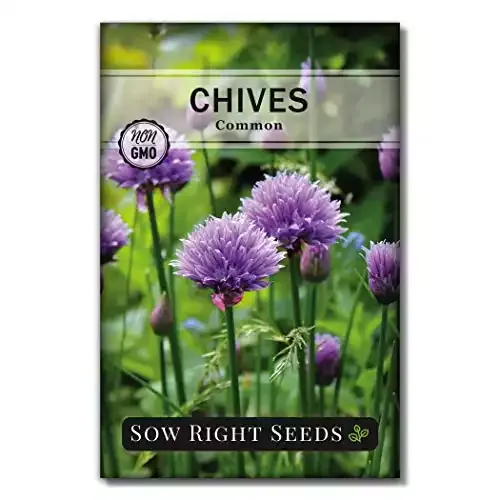

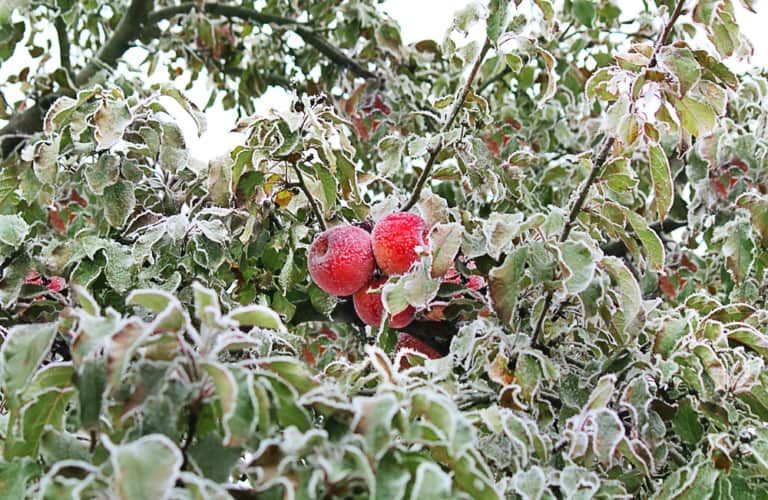
![How to Get Rid of a Lawn Full of Weeds, Naturally [No Chemicals Required!]](https://69be7209.flyingcdn.com/wp-content/uploads/2020/12/lawn-of-spring-flowers-and-sunlight-green-floral-background-with-bunch-of-grass-768x512.jpg)
